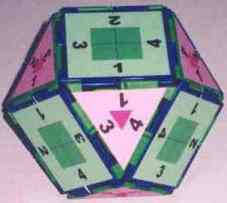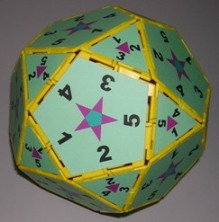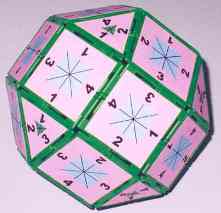 «These days, Jessurun de Mesquita (1868-1944) is known principally for his association with one of his pupils, M.C. Escher. He is also well-known in the Netherlands for his crisp woodcuts of animals in Amsterdam’s Artis zoo. But De Mesquita’s surviving oeuvre is far more varied and innovative than is generally assumed. This first major retrospective in twenty years illustrates the point with drawings, water colours, woodcuts, etchings, paintings and examples of the applied arts.
«These days, Jessurun de Mesquita (1868-1944) is known principally for his association with one of his pupils, M.C. Escher. He is also well-known in the Netherlands for his crisp woodcuts of animals in Amsterdam’s Artis zoo. But De Mesquita’s surviving oeuvre is far more varied and innovative than is generally assumed. This first major retrospective in twenty years illustrates the point with drawings, water colours, woodcuts, etchings, paintings and examples of the applied arts.Samuel Jessurun de Mesquita grew up in the closed world of Amsterdam’s Portuguese(*) Jewish community. He trained at the city’s school of applied arts and state teachers’ training college.»
Samuel Jessurun de Mesquita on gemeentemuseum.nl
(*) Father: Josua Jessurun de Mesquita. Mother: Judith Mendes da Costa
(*) Father: Josua Jessurun de Mesquita. Mother: Judith Mendes da Costa
 «With Nazi Germany’s invasion of the Netherlands in May, 1940, de Mesquita, already in poor health, was forced to lead a secluded life, limiting his work largely to sketches. In the winter of 1944, on either January 31 or February 1, the occupying German forces entered the home of the de Mesquita family in Watergraafsmeer, now part of Amsterdam, and apprehended him, his wife Elisabeth, and their only son Jaap. Transported to Auschwitz, Samuel Jessurun and Elisabeth were sent to the gas chambers within days of their arrival on February 11; Jaap perished in the concentration camp at Theresienstadt on March 20. Escher and some of Jaap’s friends were successful in rescuing some of the works that had remained in the de Mesquita home.» Samuel Jessurun de Mesquita (Wikipedia)
«With Nazi Germany’s invasion of the Netherlands in May, 1940, de Mesquita, already in poor health, was forced to lead a secluded life, limiting his work largely to sketches. In the winter of 1944, on either January 31 or February 1, the occupying German forces entered the home of the de Mesquita family in Watergraafsmeer, now part of Amsterdam, and apprehended him, his wife Elisabeth, and their only son Jaap. Transported to Auschwitz, Samuel Jessurun and Elisabeth were sent to the gas chambers within days of their arrival on February 11; Jaap perished in the concentration camp at Theresienstadt on March 20. Escher and some of Jaap’s friends were successful in rescuing some of the works that had remained in the de Mesquita home.» Samuel Jessurun de Mesquita (Wikipedia)«In September 1920 Maurits moved to Haarlem in a final attempt to try follow his father's wish that he study architecture and he enrolled at the School for Architecture and Decorative Arts. A chance meeting with Samuel Jesserum de Mesquita, a graphic arts teacher, proved a landmark event in Escher's life and he became convinced that a graphic arts programme would be better suited to his skills. De Mesquita taught the eager Escher all he knew of woodcut printing techniques, gave him space to experiment, and encouraged him to experiment widely in order to develop his skills.»
Maurits Cornelius Escher
Maurits Cornelius Escher
-
Listen Escher about the influence that Mesquita had in his change from architecture to graphic art: Interview part 2 (listen also: Interview part 1 Interview part 3)
Interviews from The Official M.C. Escher Website




.jpg)
.jpg)
.jpg)


.jpg)
.jpg)






No comments:
Post a Comment